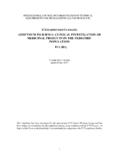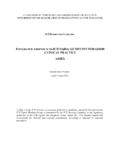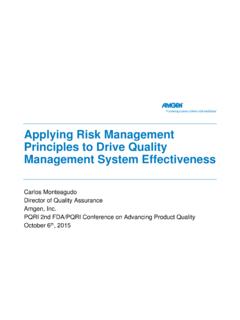Transcription of Final Concept Paper Q12: Technical and Regulatory ...
1 International Conference on Harmonisation of Technical Requirements for Registration of Pharmaceuticals for Human Use ICH Secretariat, Chemin Louis-Dunant 15, Box 195, 1211 Geneva 20, Switzerland Telephone: +41 (22) 338 32 06, Telefax: +41 (22) 338 32 30 Final Concept Paper Q12: Technical and Regulatory Considerations for Pharmaceutical Product Lifecycle Management dated 28 July 2014 Endorsed by the ICH Steering Committee on 9 September 2014 Type of Harmonisation Action Proposed The proposed guideline will apply to pharmaceutical products, including currently marketed chemical, biotechnological and biological products. However, each Regulatory authority will decide whether generic medicines can be included in the scope of this guideline.
2 This guideline is intended to work with ICH Q8 to Q11 Guidelines and will provide a framework to facilitate the management of post-approval Chemistry, Manufacturing and Controls (CMC) changes in a more predictable and efficient manner across the product lifecycle. Adoption of this guideline will promote innovation and continual improvement, and strengthen quality assurance and reliable supply of product, including proactive planning of supply chain adjustments. It will allow regulators (assessors and inspectors) to better understand, and have more confidence and trust in a firm s Pharmaceutical Quality System (PQS) for management of post-approval CMC changes.
3 Statement of the Perceived Problem There is currently a lack of a harmonised approach on Technical and Regulatory considerations for lifecycle management. While the concepts in ICH Q8, Q9, Q10 and Q11 provide opportunities for a more science and risk-based approach for assessing changes across the lifecycle, several gaps exist which limit full realisation of intended benefits. The envisioned post-approval operational flexibility has not been achieved. The main emphasis at ICH to date has focused on early stages of the product lifecycle ( , development through launch). A similar focus is now needed for the commercial manufacturing phase in order to fill the gaps in the implementation and fully realize the opportunities promised by ICH Q8 to Q11.
4 For example, lack of alignment has led to confusion on the necessary information and level of detail in the dossier and its impact on change management and Regulatory reporting. The lack of harmonised approaches for Technical and Regulatory aspects for lifecycle management can hinder innovation and continual improvement in the pharmaceutical and biotechnology sectors. In addition, there is an inconsistent utilisation of post-approval change management plans and comparability protocols. As a consequence, opportunities to prospectively manage future changes in a more strategic manner, particularly where there is enhanced product knowledge and process understanding, have not been fully realised.
5 Final Q12 Concept Paper Endorsed: 9 September 2014 -2- An ICH harmonised approach on Technical and Regulatory considerations for lifecycle management will benefit industry, regulators and patients by supporting continued quality assurance and supply of high quality product. Issues to be Resolved Change management is one of the fundamental components of a PQS as described in ICH Q10 and operates throughout the product lifecycle. This guidance will promote continual improvement in manufacturing and controls and enable more efficient Regulatory evaluation, both in review and inspection, over the product lifecycle through: Regulatory Dossier o Explore the development of a harmonised approach to Regulatory commitments for inclusion in the guideline.
6 Such approaches could enable post approval changes that facilitate continual improvement and encourage the adoption of innovative technologies. o Delineate the appropriate level of detail and information necessary for Regulatory assessment and inspection in the dossier, in order to create a more enabling post approval change management system. Pharmaceutical Quality System aspects (ICH Q10) o Establish criteria for a harmonised risk-based change management system based on product, process and/or clinical knowledge that effectively evaluates the impact of change on quality, and, as applicable to safety and efficacy. o Clarify expectations and reinforce the need to maintain a knowledge management system that ensures continuity of product and process information over the product lifecycle.
7 Post-Approval Change Management Plans and Protocols o Introduce the Concept of a post-approval management plan that can be used to proactively identify post-approval changes and the mechanism to submit and assess these changes by Regulatory authorities (Assessors and Inspectors) o Establish criteria for post-approval change management protocols that can be adopted by the ICH regions (enabling a harmonised proactive approach for lifecycle management) o Encourage enhanced product development and control strategy approaches (Quality by Design (QbD)) providing opportunities for scientific and risk based foundations for post-approval change management plans.
8 Background to the Proposal In 2003, ICH developed the Quality vision to: Develop a harmonised pharmaceutical quality system applicable across the life cycle of the product emphasizing an integrated approach to quality risk management and science. This vision was intended to ensure quality products and reliable supply to patients. Since 2003, ICH has developed several Guidelines (Q8-11) to enable realisation of the vision. Nevertheless, additional needs have been identified by both industry and regulators during implementation based on observations and experience. While it is agreed that the 2003 ICH Quality vision is still valid and appropriate, challenges remain.
9 In particular, there is a need to improve execution and communication of science and risk based assessments that enable Final Q12 Concept Paper Endorsed: 9 September 2014 -3- product lifecycle management. To date, the main emphasis has been on the implementation of the principles described in ICH Q8-11 during the pharmaceutical development stage of the product lifecyle; we now need to focus on the commercial manufacturing phase of the lifecycle. ICH Q10 introduced the concepts of quality risk management and knowledge management as enablers to facilitate achievement of the objectives: achieve product realisation, maintain a state of control, and facilitate continual improvement, by providing the means for science and risk based decisions related to product quality.
10 The ICH Q9 Guideline on quality risk management provides details on that enabler, but there are only limited details on expectations for knowledge management. ICH Q10 provides limited information for the change management element of the PQS. However, it has become apparent by recent implementation experiences that additional detail of a change management system is needed to ensure a transparent and harmonised understanding for assessors and inspectors of the way changes will be managed. Additional guidance would allow regulators (assessors and inspectors) to better understand, and have greater confidence and trust in change management and facilitate applicants proposals for operational flexibility based on enhanced product and process understanding and the PQS.
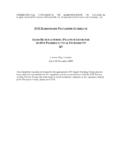
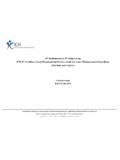
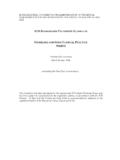
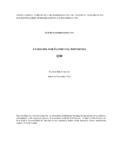
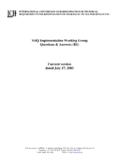

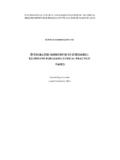
![[ICH E2F] [EXAMPLE DSUR – PHASE III …](/cache/preview/1/3/5/f/e/1/c/f/thumb-135fe1cf2cdb82799c462ad0ea089c48.jpg)
